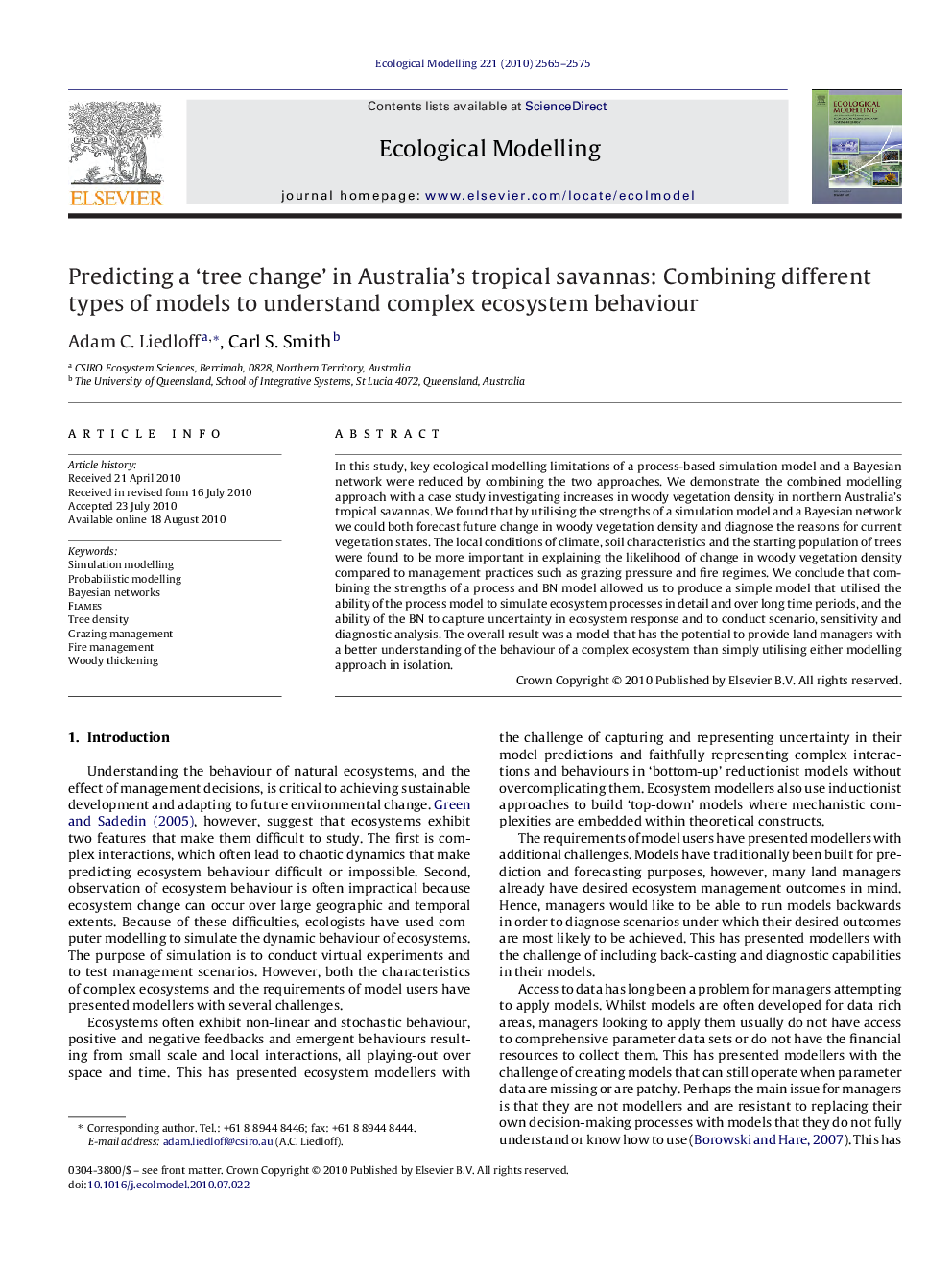| Article ID | Journal | Published Year | Pages | File Type |
|---|---|---|---|---|
| 4377244 | Ecological Modelling | 2010 | 11 Pages |
Abstract
In this study, key ecological modelling limitations of a process-based simulation model and a Bayesian network were reduced by combining the two approaches. We demonstrate the combined modelling approach with a case study investigating increases in woody vegetation density in northern Australia's tropical savannas. We found that by utilising the strengths of a simulation model and a Bayesian network we could both forecast future change in woody vegetation density and diagnose the reasons for current vegetation states. The local conditions of climate, soil characteristics and the starting population of trees were found to be more important in explaining the likelihood of change in woody vegetation density compared to management practices such as grazing pressure and fire regimes. We conclude that combining the strengths of a process and BN model allowed us to produce a simple model that utilised the ability of the process model to simulate ecosystem processes in detail and over long time periods, and the ability of the BN to capture uncertainty in ecosystem response and to conduct scenario, sensitivity and diagnostic analysis. The overall result was a model that has the potential to provide land managers with a better understanding of the behaviour of a complex ecosystem than simply utilising either modelling approach in isolation.
Keywords
Related Topics
Life Sciences
Agricultural and Biological Sciences
Ecology, Evolution, Behavior and Systematics
Authors
Adam C. Liedloff, Carl S. Smith,
